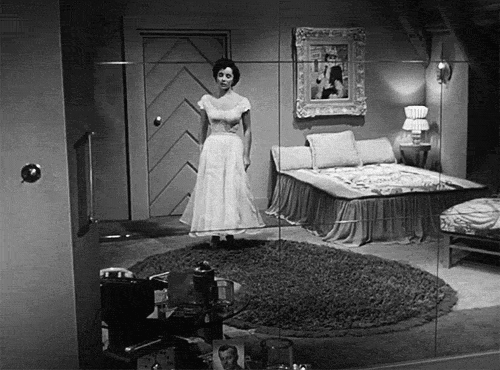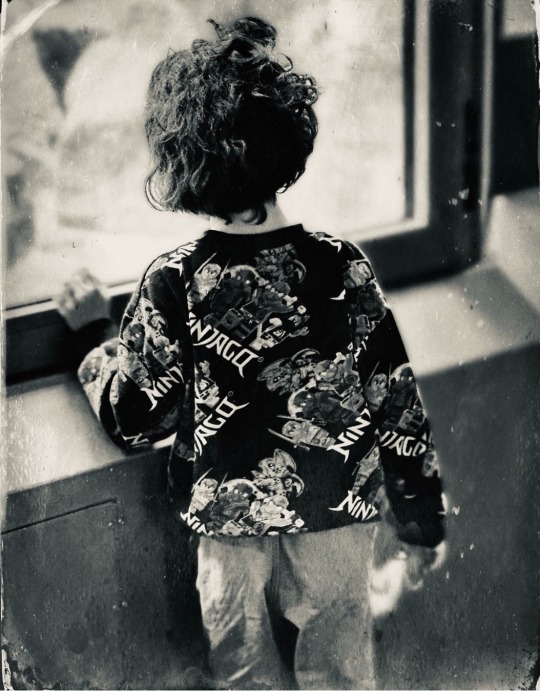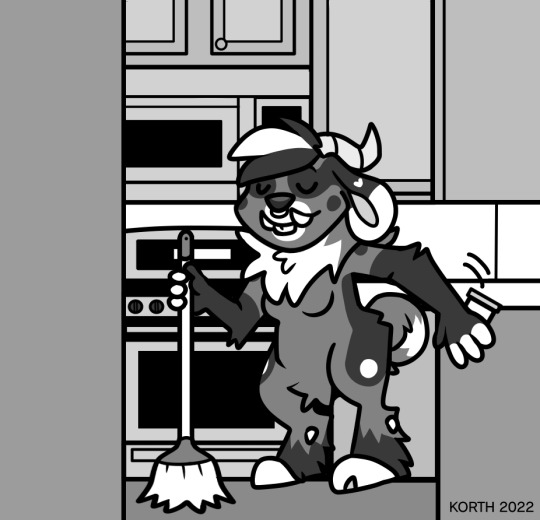#korth
Text
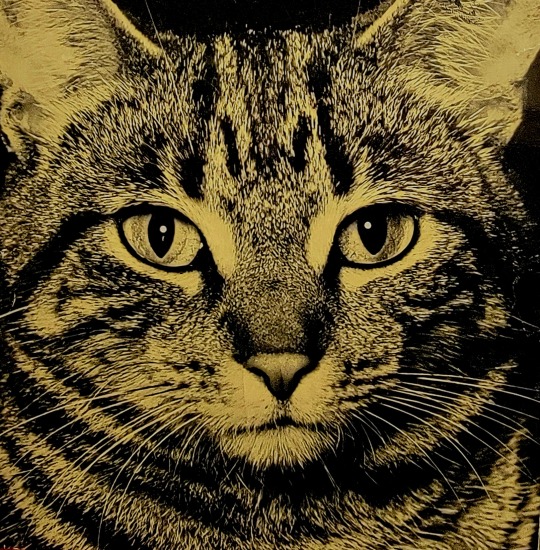
From our picture files: "Fred G. Korth: Tabby cat." Modern Photography, 1936-1937
#tabby cat#fred g. korth#modern photography#photography#1930s#tabby#cat#cats#vintage#korth#kitty#detroit public library
140 notes
·
View notes
Text
The Strange Idol [analysis]
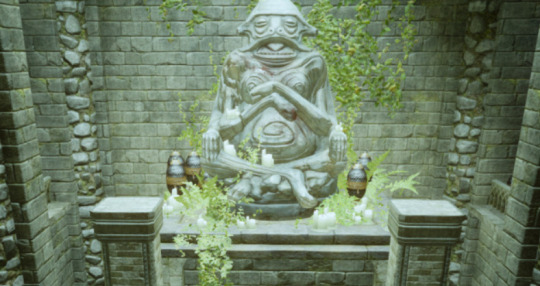
A compilation of what we know and what we can speculate about the old “Strange Idol”.
[This post belongs to the series “Analysis and speculation of Statues”]
This is a mysterious statue that has appeared in DA2 and DAI in different contexts. In DA2, we find it in three places: The Harimann’s house basement, atop of the Sundermount, and inside Dumat’s Temple. Its resemblance in style [shape of limbs, decoration, lines, material] to the Red Idol is worth noting. I already wrote an extensive post about “DA2: The Strange Idol” but I wanted to make a summary here with brief speculations supported by the knowledge of the recent published comics. To understand the context of the idol in DA2 in detail, I suggest reading that post. As I always repeat, DA lore adds a lot when you have the context in which it appears [and also helps you not to go deep into wild theories].
Where do we find this statue in DA games?
It appears for the first time in Merril’s Quest [read Merril and the Eluvian], inside a cave atop of the Sundermount.
In Sebastian’s Quest, placed in the Basement of Harimann’s mansion which turned out to be an ancient Tevinter Ruin. Thanks to Tevinter Nights book we know that having buildings undergrounf was/is a Tevinter costume that keeps existing in Mintharous. We also know that Kirkwall, historically, has a lot of ruins and chambers below the city itself. This allowed Tevinter mages to do forbidden research or unsafe magic or have cult activities without the authorities’ knowledge.
In a humble temple deep into the Deep Roads, at the base of the tower-prison where Corypheus is held.
It also appears several times in the Black Emporium of DA2, behind and over the mirror of transformation.
It appears in a cave that you have access by following the Old Chantry Trail Sign, in Western Approach. In there, we learn it’s warm to the touch and has a pulse.
His face appears in some walls along Din'an Hanin, and it’s the central statue in the Elandrin’s Tomb.
Its face appears in the mural the “Removal of the Vallaslin”, located in Elven Mountain Ruins , Forgotten Sanctuary
The raw information
So far, details that are worth noticing about this idol:
It has many limbs: two legs and four arms. Other multi-limbered creatures in DA universe are Varterrals [ read DLC: Witch Hunt and The Missing for more varterral’s information], some demons like the envy one, Xenon [ owner of the Black Emporium], and some creatures related to elvhenan paintings [read Nation Art: Elvhen] which in some instance may or may not be related to The Horror of Hormak [Personal Speculation].

Its face is monkey-like or a bit toad-like. Its mouth is open, its eyes a bit squinted. For this reason, it can be related to Elgar’nan through the codex Vir Dirthara: Signs of Victory, [“narrowed eyes and its open, snarling mouth”] which was analysed in the post Ancient Elven codices; Vir Dirthara.

Its chest and stomach have swirls. One can associate swirls all over the games with lyrium or, in DAI, with Veilfire/Fade and elvhenan gods [the dragon statue that represents Myhtal as well as the howling wolf statue that represents Fen’harel both have swirls along their body]. For more details on this aspect, read the section “Spirals and branching lines as Fade, magic, and lyrium” in the post Murals in DAI: Basics
Its limbs have long carvings, like canals, from which something red can be seen. Given the context of being perceived as Dumat, or as Elgar’nan who may have accepted blood from his defeated enemies [as his codices imply a ruthless, violent, dominant behaviour], one can suspect it is dried blood drips. It’s very subtle, but the red lines in them have been present in both designs [in DA2 and DAI, in DAI it looks even more like blood]. We also know that the Elvhenan performed blood magic and it’s highly likely that blood magic was originally from Arlathan [hints of this info in Tarohne, the Fell Grimoire, and Xebenkeck]. So, there are several hints that show that elvhenan know how to bind spirits and how to use blood magic.
In Sebastian’s quest, this idol appears in an underground Tevinter ruin, and has a [desire] demon bind to it.
In Merril’s quest, this idol appears inside Elvhen ruins and has a pride demon bind to it. However, given the context, the statue can be Elven or Tevinter, since the battle of Sundermount caused that both sides would “unleash horrors” in the Waking World [the codex is not too reliable, though, since it speaks of a legend, and it’s “recent history” related to Arlathan; details in Sundermount as an elven graveyard]. We also know that a lot of knowledge about Arlathan has been lost or modified due to time and elven mortality, but we also know that these elves were deeply related to blood magic. If we add the binding culture that Elvhenan had according to DAI [for example, read Ancient Elven codices; The Lost Temple of Dirthamen, and The Lost Temple of Dirthamen - Part 2] we can suspect that this demon was bind to this statue for either faction [with defensive purposes if elven or as a gesture of dominance if Tevinter]. Not necessarily it has to be Tevinter-made. What I mean is that we have enough context to know that this may have been Tevinter or Elvhenan doing. In fact, one can speculate that maybe the original knowledge was Elvhenan and Tevinter just took it as its own as it has always done with elvhenan magical knowledge.

In Merril’s quest, Felandaris appears close to this statue, suggesting that the Veil is very thin in the area [this plant only grows around places where the veil is thin and demon presence is expected].


In DA2, this idol is usually close to strange dragon-skull totems that, due to the lack of codex, is impossible to associate with Tevinter or Elvhenan. In DAI they are used in the ramparts of Exalted Plains, seen as structures that hold barriers around pits where dead arise. So they seem to be related to [demon/undead] summoning rituals that, so far we know in lore, may be Tevinter or Elvhenan alike.

In DA2:DLC Legacy, we find this idol too, but deep into the Deep Roads, at the bottom of Corypheus’ tower-prison in a small structure that has an “altar of Dumat”. Four plates are placed there, where you have to put four items found along the DLC: a sacrificial dagger, a crown, a ritual scroll, and a sacred Urn. If you give the items, a reward is given [chain of the penitent]. If you defile the altar instead, you will fight some shades, which gives us the idea that this idol is related to demons and/or blood magic, thinning the Veil around it [shades are usually the standard shape that demons take when enter the waking world without possessing living creatures].
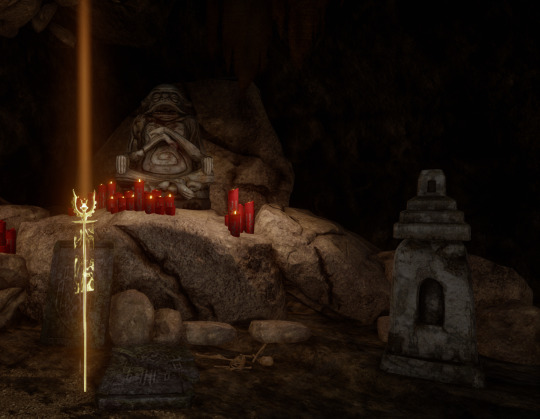
In DAI, it appears in a cave of Western Approach where you can place your landmark, and it’s called “The Thing in the Dark” [details in Western Approach: Old Chantry Trail Signs]. The small message we get in it is “This statue is oddly warm to the touch and shivers slightly, as though it might have a pulse”. In DA2, Merril could feel something in the statue when the demon was bind to it, so this warm shivering effect may be the concept that some spirit/demon is bind to it. Let’s remember that in DAI we found a lot of things that are warm to the touch and have some pulse/shiver/angry feeling to it that may imply a spirit attached to it [read The Taken Shape set for a list of details about warm, pulsing objects]
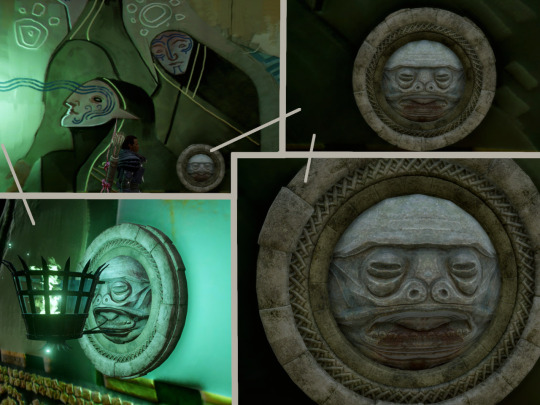
In DAI, curiously, his face appears in some walls along Din'an Hanin, which is expected since his main tomb is underground of that ruin, but it also appears in the lower section of the mural “Removal of the Vallaslin” in the ancient elven ruins of Fen’Harel. One of these faces appears as the source of Veilfire.

Design-wise may have some distant similarities with Korth, the Father-mountain of the Avvar, which has [dragon?] horns.
Speculation section
Similarities with the red lyrium idol
When we find similarities between this statue and the red lyrium idol, I’m not saying they are the same, but they may have similar functions in ancient rituals. Among the similarities, we can notice that figures have carvings along the body.
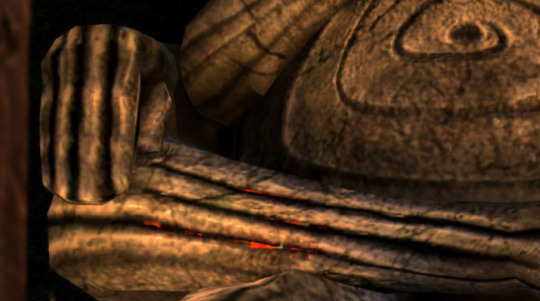
May the red lines inside the carvings of the Strange Idol not be blood but inactivated red lyrium?

Why would I say this? The Red lyrium idol has shown, specially in the comic Dark Fortress, to look like a piece of wood [as if it were inactivated red lyrium] unless I’ve been understading it too wrongly [the scholar even suspects that the idol, once consumed into the creation of a sword for the Red Wraith, has been rendered useless, and its drawing looks more like a piece of wood/metal than a “red glowing crystal”]. Only in some places we see it red. This visual fact always confused me in DA series. We clearly see that the object is not entirely made of red lyrium, only some parts [specially the roots] look like it. Why so many characters insist in saying it’s completely made of red lyrium?

If we remember, the cinematics in Dragon Age Official Teaser Trailer - 2018 Game Awards shows that the idol glows only along some lines, as if the red lyrium is activating from within its metal/wood material. Which is similar to the red lines we see in the Strange Idol, but in a dormant way. We also know that Red Lyrium sounds angry and feels warm [check the red lyrium section in Songs and elements that sing and whisper in DA Lore]. Since the Strange Idol is warm to the touch too [according to DAI in Western Approach: Old Chantry Trail Signs] and has these red lines barely seen, could it be related to inactivated red lyrium? I really don’t know what to think about it since we know so little about the red lyrium idol [and I suspect it has been retconned a couple of times even along DA2].
Design wise, the red lyrium idol always looked to me like wood+metal, and only its lower part is made of red lyrium, as if it were roots, implying from a design-point-of-view the metaphor that the horror represented in the figure is “fed” on red lyrium [details and speculations in Red Lyrium Idol ].
Pros and cons of certain speculations related to the Strange Idol:
Speculation 1: “This statue is Elgar’nan”
PRO
Its face coincides with the codex Vir Dirthara: Signs of Victory, which describes Elgar’nan with “ narrowed eyes and its open, snarling mouth”. The general shape of the Strange Idol may look like a mountain, as it is said in the codex that Elgar’nan statue was made of stone as big as a mountain [metaphorically implying how he defeated Titans and created monuments of himself on or with the corpse of his enemies].
It makes sense for it to appear in the Bastion of Elgar’nan in Emerald Graves: Din'an Hanin, Elandrin’s Tomb as central icon of the tomb of knights that defended elvhen, considering that Elgar’nan is perceived along the codices as a big leader during the Titan war.
It makes sense for it to be in the Sundermount cave, since we can speculate it was a statue used to bind a demon by the elvhen resisting the war against Tevinter. Let’s remember that Elgar’nan was always related to victory and wars against the Titans in the oldest codices we find about him [read Elgar’nan section in Evanuris].
CONS
If this is an elvhen god/Evanuris, I hardly see it worshipped by Tevinter, who allways had an ancient, deep rejection to elves. It would make no sense to use Elgar’nan as a representation of Dumat either [not consciously, at least]. So it makes no sense for this statue to appear in the Altar of Dumat close to the Corypheus’ prison as well as in Sebastian’s quest, in an underground Tevinter ruin.
It doesn’t have any visual similarity to Elgar’nan mosaic, which displays a bestial arm with claws. There is no similar hint of bestiality in the case of the Strange Idol [read Elgar’nan section in Evanuris]. However, this is not a strong counterargument: we can say the same of Mythal, who has two representations, one as an elf in a mosaic, and another as a dragon [in mosaic and statues too]. Read Mythal section in Evanuris for further details.
Neither con not pro: I can’t speculate why Elgar’nan would appear in the mural of “Removal of the Vallaslin” at the Elven Mountain Ruins, Forgotten Sanctuary. Specially if we think that the previous corridor towards this mural doesn’t have any mosaic of Elgar’nan either. I also can’t explain or speculate why the Forgotten Sanctuary, a place to give shelter to slaves, would have images of the Evanuris on its walls, the ones supporting the slavery system of the moment.
This face, if it is truly Elgar’nan’s, is also presented as a source of Veilfire which can be related to Titans through the mural “The Death of a Titan”, where the source of Veilfire is presented in the heart of the Titan. Linking both symbols, one can suspect that maybe Elgar’nan’s victory over the Titans granted him the power of exceptional magic [divinity?], represented in these murals as the source of this particular green fire.
Speculation 2: “This statue is Dumat”
PRO:
It makes sense to appear close to Corypheus’ prison in an altar to Dumat or in the underground Tevinter ruins from Sebastian’s quest.
It makes sense to appear in Sundermount, so we can assume it was a symbol of dominance from Tevinter when they attacked the resisting elves in this place. They bind a demon there too, and this brings no conflict with the lore; we know Tevinter always had a deep knowledge of binding and using demons in their favour.
CONS:
It makes no sense for Dumat to appear in the Bastion of Elgar’nan in Emerald Graves: Din'an Hanin, Elandrin’s Tomb. If it would have appeared in the first part of the zone, where we find statues of Andraste as the codex of Emerald Knights upgrades, it would have been considered an assimilation from former slaves, but this statue appears in a central position in a tomb that has been sealed long ago, surrounded by many statues of Mythal in her dragon shape.
Besides, why would Dumat appear in the mural of “Removal of the Vallaslin” at the Elven Mountain Ruins, Forgotten Sanctuary? So far we know the “Tevinter” perspective of the Old Gods appeared long time after the Elvhen and the Evanuris, so it’s hardly a contemporaneous concept to the ancient Elvhenan Gods.
Dumat, understood as the Old God perceived by Tevinter, is a Dragon in shape. Its will may be something else, though, that may be represented in this toad-like figure?.
Speculation 3: “This statue is an ancient god [maybe a Forgotten One?] worshipped by the Evanuris before claiming divinity, and Tevinter adopted it later, believing them as Dragons or The Old Gods”.
PROS:
This concept makes sense in both scenarios, Tevinter and Elvhenan. Like I said in the lore sections of the posts related to the comics The Silent Grove, Those Who Speak, Until We Sleep, Magekiller, and The Missing; there are some hints that make us speculate that Evanuris worshipped great dragons originally [that may or may not result in the Forgotten Ones]. Mythal should have been one of them as she is a dragon herself, but they stopped worshipping these ancient gods when they took the “divine winged shape” for themselves, claiming divinity. From that moment on, the Evanuris [at least Andruil] hunt these dragon-gods/Forgotten-Ones down, chasing them to the Void [which is more related to the underground lyrium than to a dimensional pocket ala Crossroads]. Mythal stopped her [ and intentionally or not, we don’t know, she protected these entities] by fighting against Andruil and removing her knowledge of how to reach the Void because in the Void there was “Darkness” and madness that Andruil infected with [for a whole detailed analysis of this, check the codex explanation of “Elven God Andruil” in the post Ancient Elven codices, Temple of Mythal].
In this way, it makes sense for Tevinter to end up using similar iconography, ignoring it was the same god that the Elvhenan venerated originally. Tevinter knows that the Old Gods take the shape of Dragons, but they may be something else entirely.
Under this idea, it makes sense for this idol to appear in Tevinter or Elvhenan environments.
CONS:
There are too few hints to support this hypothesis of Forgotten Ones as the original gods that the Evanuris worshipped until they claimed divinity for themselves, and later Tevinter took them in their dragon shape and established the cult of the Old Gods. Most of the hints pointing out this relationship are recent [in the late comics].
We also have a strange potential relationship between the Forgotten Ones and the Forbidden Ones via the Seekers. It may be a red herring done by the devs or a consequence of “unreliable narrators”. Details in “Tarohne, the Fell Grimoire, and Xebenkeck”.
Another con is that this idol has no shape of a dragon when we know that the Old Gods are always represented as Dragons, and we also suspected from the comics that the Forgotten Ones may be dragons instead of elvhen . We also have another potential link with Hakkon as Geldauran, who may be one of them; for more details, read Elvhen Tomb and Ancient Tevinter presence, Speculation.
Neither con not pro but a detail worth noting: this entity has a shape with a distant resemblance to Korth, the Avvar Mountain-Father god [the mouth shape are alike, and the nostrils of the Strange Idol are similar to the Korth’s nose-eyes]. Korth is the oldest and strongest god of the Avvar pantheon. We know the Avvar have always had a much better understanding of the world due to their deep conection with the spirits, whose wisdom is always shared to the Augur of the tribe. With this I mean that this Strange Idol seems to be a very old entity that even the Avvar perceived, reflected later in the shape of Korth. Korth is related to the Mountain, as Elgar’nan is related to it in a dominant way in the codex Vir Dirthara: Signs of Victory. Elgar’nan’s fury [which destroys everything it touches, according to the codex The Judgment of Mythal or read Elgar’nan section in Evanuris for more details] has some distant similarity to Korth’s cruelty when he lost his heart [read codex The Frostback Mountains] and became a force of anger and destruction. According to the relationships I’ve been trying to connect along this blog, these details seem to me that the same entity has been perceived by Avvar, Tevinters, and Elvhenan, but represented with some differences in order to fit their own purposes [as all DA lore has been showing so far].
#Analysis and speculation of Statues#the strange idol#strange idol#dumat#Elgar'nan#korth#old gods#forgotten ones
27 notes
·
View notes
Text
Avvar symbolism - Korth the Mountain Father

Center piece of the Frostback Basin Glass (Skyhold decor).
Right panel of the Avvar Glass (Skyhold decor).
Seat of the Legacy Ferelden Throne (Skyhold decor).
Unused texture asset of an astrarium puzzle.
Korth's heraldry.
Part of the menu banner for some of the Frostback Basin quests, likely depicting the stone-bear that Korth appeared as in the legend about the naming of Stone-Bear Hold.
Lady | Korth | Hakkon
92 notes
·
View notes
Text

Here’s some art I gave up on not long after I started inking it. But then I decided to just do it really badly instead of deleting it into the abyss.
#furry#furry oc#Korth#Cinnamon Fox#my art#my bad art#doing it bad is better than not doing it at all
0 notes
Text
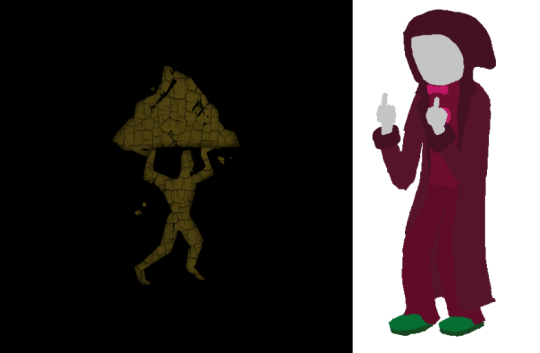
A hypothetical god tier for Korth the Mountain-Father from Dragon Age: the Lord of Heart.
A Lord of Heart is among those who are masters of the individual’s impact. They are motivated by themselves to be a master of instinct. (x)
The Lord of Heart’s will takes precedence over everything else and they are invested in self discovery. (x)
They are the Outlier Free Spirit, defined by domination and instinct. (x)
Their opposite and inverse is the Muse of Mind.
They share their personality with no one, as a master classpect.
The Lord of Heart would quest on a planet similar to the Land of ??? and Heart, reigned over by Aphrodite (Goddess of Love) or Yaldabaoth (Devourer of Souls). They would rise to ascension on the wings of ladybugs. (x)(x)(x)
#korth the mountain father#korth#dragon age#lord of heart#character classpecting#classpecting#homestuck#my post
1 note
·
View note
Text
Korth Direct Mortgage CEO plans new company initiatives
New initiatives now underfoot
By virtue of her stock purchase earlier this month, MacDonald-Korth now holds 46% of the company’s stock. With such commanding interest, she plans to implement new initiatives at the firm, she told MPA.
“Currently, most of our investors take advantage of investments in independent mortgage deals,” she said. “We are launching a fund to give people the opportunity to…
View On WordPress
0 notes
Text

Fred G. Korth ~ Chrysanthemum. Published in Camera Craft, March 1936 (vol. 43) | src internet archive
#chrysantemum#flower portrait#close up#botanicals#flora#fleur#flower#fiore#blumen#flor#camera craft#1930s#fred korth#fred g. korth#botanical#nature photography
153 notes
·
View notes
Photo

Fred G. Korth - Lonesome Pine
180 notes
·
View notes
Text

Fred G. Korth (American, born Germany, 1902-1983) - Lightbulbs - c.1938
3 notes
·
View notes
Text
DLC: Jaws of Hakkon - Frostback Basin, Stone-Bear Hold Avvars - Part 2

Although it is often referred to as a single entity, the Avvar are actually groups of small tribes who share their beliefs and culture but otherwise operate independently of each other. They were part of the tribes of the Alamarri who crossed the Frostback Mountains in -1222 TE [more than a thousand years before the creation of the Tevinter Imperium] to escape what legend says it was a "shadow goddess".
In this post, the following topics inside the DLC are treated
Stone-Bear Hold: houses and statues
Trials and Justice
Miscellaneous objects
The Hakonnite and Avvar’s understanding of their Gods
[This is part of the series “Playing DA like an archaeologist”]
[Index page of Dragon Age Lore ]
Stone-Bear Hold: houses and statues


The Hold has two entrances; one through the Swamp, which path is guided by statues of a variation of the Keepers of Fear.
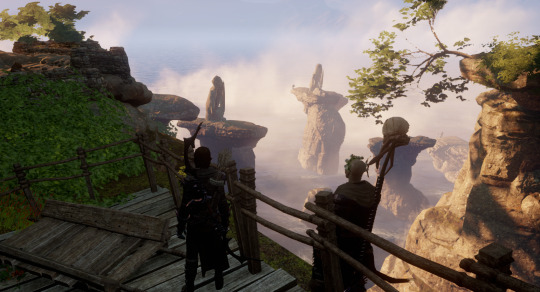

This entrance guides us to the cliffs where we see more avvar statues made on stones over the sea, in this case a variation of a Keepers of Fear. It’s curious they are giving their backs to the sea, and the scream is directed to the Hold.

The other entrance of the Hold is placed at the south of the map. In this part, we find people carving the stone, creating a standard Keeper of Fear and, for the first time, we see a statue of Korth, the Mountain-Father.

The throne of Thane is very tribal and humble. We find these monoliths with ropes, that are easily seen all over Ferelden [Crestwood], and behind the throne, a big statue of a Dwarf with long limbs, probably as a tribute to the presence of Dwarven lineage among the Avvar [and other descendants of the Alamarri like the Chasind]. There is a spooky pottery beside the throne too.

In another house, we see a room for celebration such as a marriage. It’s particularly cosy and well decorated.

Inside this celebration room, we find a bard who explains to us the legend-marks, the names that replace the "family name” of the Avvar. These marks work like a title related to their actions or to an iconic aspect of a person. We also can infer the avvar surname system: it’s basically a way to say of who you are daughter or son. Men use *name_of_parent*-sen while women use *name_of_parent*-sdotten.

The rest of the houses look like ibero-celt houses, circular buildings with a central fire in them.
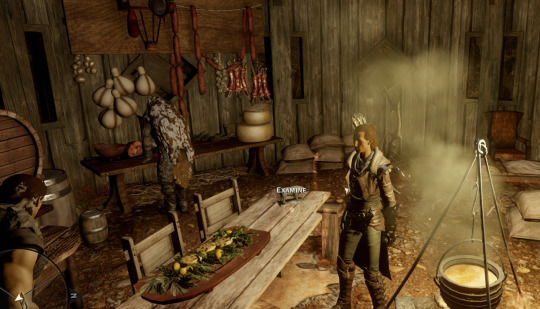
Visiting some houses where they work on the storage of food of the hold, we trigger codices such as The Naming of Stone-Bear Hold, where the legend of the stone-bear hold is explained: time ago, the people of this hold had lost hope in finding food and shelter during a hard winter, but one of them saw a great bear that guided him to his place. When the person inspected the bear closely, he realised it was made of stone, thus the name of this hold.
Another codex triggered in a house that was curing meat is On Avvar Cuisine where it's explained the hard work Avvar have to do all year in order to preserve and storage a good amount of food for the winter. They live the rest of the year preparing for the next winter in an endless, hard-to-endure cycle. Despite this rush, they always leave high-quality food offerings to the spirits around the hold, because they protect them.

Curiously, on top of the hold there is a statue that in Emerald Graves: The open we have found with the unreliable landmark called The guide, telling us that this could potentially be a representation of Falon'Din, but I doubt it. We know that Falon'Din being the "guide" was a posterior misinterpretation of the Dalish. The truth is that we don't have a more or less reliable source to know what or who this statue represents beside this codex.
By the end of the Hold we find the house of the Augur, which I talked about in the first part of this post, and the Trader Helsdin’s house, quite a peculiar, funny character.


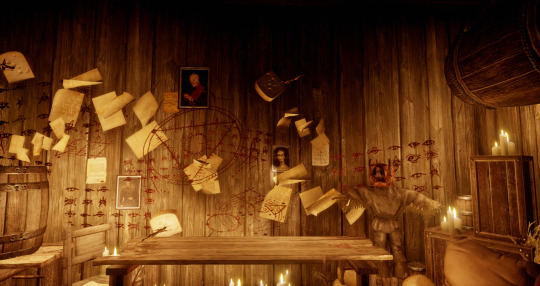
Trader Helsdim is the one responsible for the codex Mysteries of the Frostback Basin that we collected all over the Basin. Pretty much like his codex, his house is a mess of magical glyphs, items, papers, portraits, and cheese. He feels to me like a joke of Bioware, to laugh at the most wild theory-crafters of the fandom. “This is how you look like, people”, Bioware seems to say, lol.
We know that the older trader taught him how to read, write, and trade with lowlanders, and this man used these skills to get lost in conspiracy theories, lol.
Trials and Justice

With an offering to the battle master, the Inquisitor can participate in the Hakkon's trials.
As the Avvar have these trials, their gods [aka spirits] see them. Solas explains us that in this way, spirits are taught to help the avvar by giving them small improvements in these trials that they could be vital in real conflicts: such a second of strength or a glimpse into the future to see a deadly attack that can be avoided.


Beside the trial arena we find this variation of Keepers of Fear.
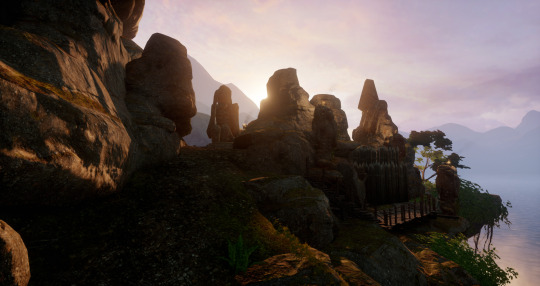

The arena for the trial of Hakkon is surrounded by four statues of Korth, the mountain-father, observing the combat from the four cardinal directions.
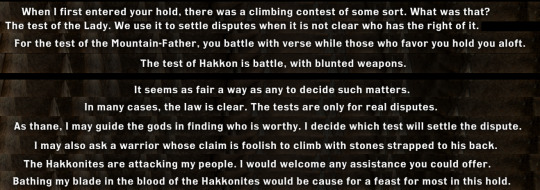
These trials are sometimes used to solve petty conflicts in the community. When there is a fight, a Thane can determine to settle things with tests. Tests of the Lady of the Skies is a contest of climbing, the test of Korth, mountain-father, is to fight with verses, and for the test of Hakkon, is a non-lethal fight with blunted weapons.
Miscellaneous objects
Interesting miscellaneous objects can be found in Skyrim after playing this DLC and picking the Avvar decoration:


We have this statue of an owl, representation of the Lady of the Skies. I find interesting in her design the ring around her head: small little spikes that may be related or may have inspired artistically other symbols in the game: the thorns that we have seen many times in vines, which have elven influence [after all, the Avvar have a strong elven influence in their culture if we can consider the tale of Tyrdda Bright-Axe Path as more or less reliable with respect to her lover of leaf-like ears],
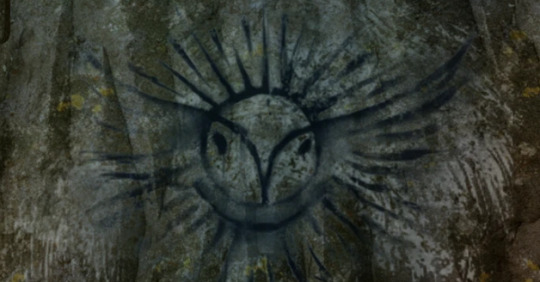
or could be an inspiration of a sun, later taken to accompany the figure of Andraste in a cult that will turn out to be the main religion of the land.
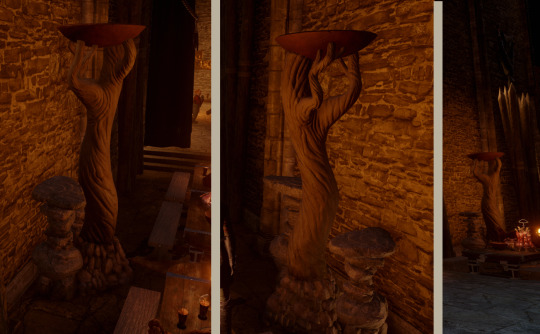
This piece of art also appears when you activate the Avvar decoration inside the Skyhold. If anything, it looks like a branch-hand holding a bowl. It gives me the impression of a sylvanian hand.

And the last decoration: a very detailed representation of Korth, the Mountain-Father. His face, so filled with beard, and his body, short and thick, makes me see a dwarf in him, which would make sense with the dwarf influence that the Avvar have. In another post I will compare the common roots or similarities that Korth has with Elgar’nan and with The Stone / Titans.
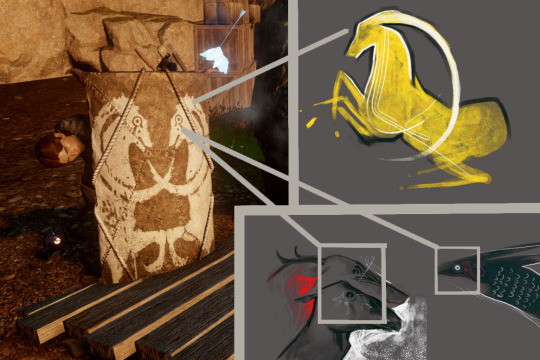
Also, as a very curious detail that I’m not sure how much I can trust, is seen in the Arena of Hakkon: during combat, some avvar warriors use these tower shields. This could mean nothing, but I think this drawing reflects a bit of elven influence that the Avvar have [maybe because Trydda’s lover has a deeper mark in the Avvar culture, or maybe because the Avvar have always been too related to spirits, learning from them, and Elves and spirits have a long History in common as well]. The Avvar shield shows a ram with horns depicted in a similar style that the elvhen golden halla. The animals on the shield have “google” eyes, which are similar to some of the eyes we found in those elvhen murals as well. They even have a “mark” that could be considered a rudimentary vallaslin or even a tear-like mark.

We also find this statue of a Dwarf with long limbs. A bigger one is present in the main chamber of the Thane throne. As I said before, it makes sense considering that the avvar have dwarven lineage in their blood. As inhabitants of mountains, Avvar also have some relationship with the stone, reflected in their respect to Korth, the Mountain-Father.
The Hakonnite and Avvar’s understanding of their Gods

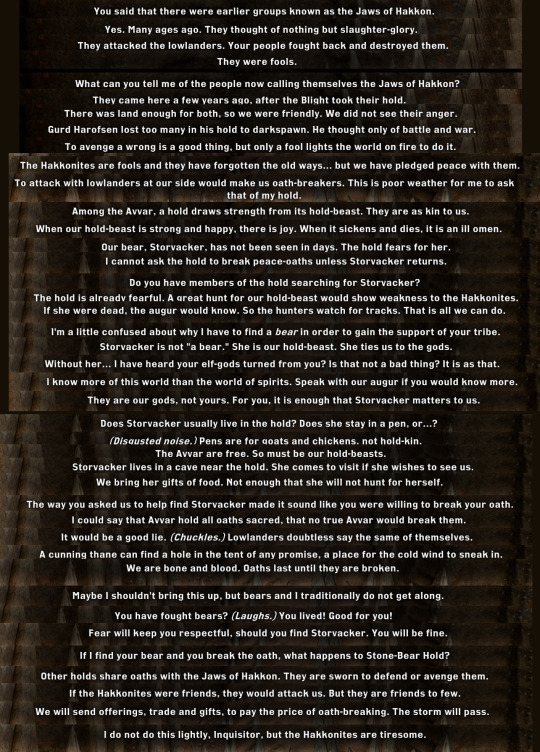
When we meet the thane of the hold, we have a lot of information about the Avvar, the Thane herself, the Hakkonites, and the way Avvar see their gods. This information can be summarised as:
Svarah Sun-Hair was born as Svarah Janesdotten, and her legend-mark ended up being Sun-Hair because she fought with her hair on fire once.
Their hold-beast is important for their hold, the hold draws strength from it. When it gets sick and dies is an ill omen. This creature ties them to the gods/spirits.
The hold-beast is free to roam everywhere like the Avvar are, because it’s considered kin. This implies that Avvar are a culture free of slavery.
Avvar respect their oaths and don’t break them easily, but they can find some holes in any promise that can take advantage of. When their promise is broken, they try to fix it with gifts.
The hakkonites’ current thane is Gurd Harofsen, who lost too many of his hold to the Darkspawn during the Fifth Blight, so he became obsessed with fighting.
Hakkonites only care about the god Hakkon, they gave their back to the rest of the Avvar gods. This is a similar situation to the one we saw in DA2 [Mark of the Assassin] with that cult of the Lady of the Skies: a tribe sometimes wants to focus entirely on one god, and something terrible happens later. In the case of DA2, the whole tribe disappeared, although it is implied that eagles saved them from the Tevinter invasion and slaughter. In this case, the Hakkonites end up disappearing as well due to the excess of fighting.
Hakkon, god of war and winter, is not evil. He represents the times for fighting.
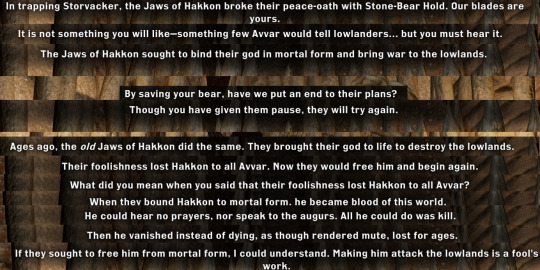
After some time showing good-will, the thane of the hold trusts us with a truth that seems to be common knowledge for her: What the Hakkonites are trying to do is to free the god who was bind to a mortal form ages ago, and bring war to the lowlands, which is what we learnt that Ameridan fought against. They did it in the past, and in doing so, the "avvar lost Hakkon".
When a god/spirit is bound to mortal form, it cannot hear prayers nor speak with the augur. He was felt to the Avvars as if he had vanished, instead of dying and returning in the typical cycle that spirits follow.
There is a deliberated resemblance with the silence of the Old Gods for Tevinter or the silence of the Evanuris [who had a spirit-like nature] for their first priests, such as we read in The Lost Temple of Dirthamen. There is a lot of potential in this DLC to tell us why the Gods of the past went silent.

The avvar would not fight a war against lowlands unless there is a need for resources.
If the hakkonites succeed in freeing Hakkon, they would have freed a great beast. She explains that the wars, when they are needed, should be done without the intervention of gods/spirits.
Avvar consider that the gods/spirits belong to the land of Dreams, they don’t take mortal form.
Curiously, we can discuss that the Lady of the Skies took mortal form as Tyrdda’s lover according to Tyrdda Bright-Axe Path. Strangely, Svarah seems to dismiss this aspect of the tale.
As a note of my own interpretation, I think it’s worthy to look for the truth of the past understanding the Avvar and not dismissing their knowledge just because they are humans, the last race that appeared in Thedas. After all, Avvar are too related to spirits and elves, Avvar is an elven word, meaning our taking [check the wonderful explanation here]
If the elves and the spirits lived and coexisted in a pre-Veil time, the avvar are living with the spirits and coexisting with them in analogous way to the elves but in the Waking World [having been guided by an Elf/spirit/their own goddess of the Skies]. The fact that they allow the possession of child mages gives them access to a lot of knowledge lost in the past that only the creatures of the Fade still remember and reflect. For this alone, their knowledge should be taken into consideration to perceive how much of it has been twisted along the ages or merely misunderstood in the translation spirit-human.
Honestly, anyone who is interested in a deeper understanding of the Avvar, go check posts like [this] or [this] or read Avvar History Reconstruction in AO3. Ammocharis’ work is very detailed in terms of naming sources, which is something I appreciate a lot, and anyone who reads this blogs probably will enjoy as well.
#avvar#Playing DA like an archaeologist#spirits#hakkon#Korth#the Lady of the Skies#lady of the skies#Dwarf with long limbs#The guide#Keepers of Fear
19 notes
·
View notes
Text



Hawke Estate
#dragon age 2#da2#hawke estate#hawke#featuring Korth the mabari aka the man of the house sorry Fenris#so many fireplaces it is heavenly for my Hawke's pyro ass
38 notes
·
View notes
Note
Korth...
Yes.
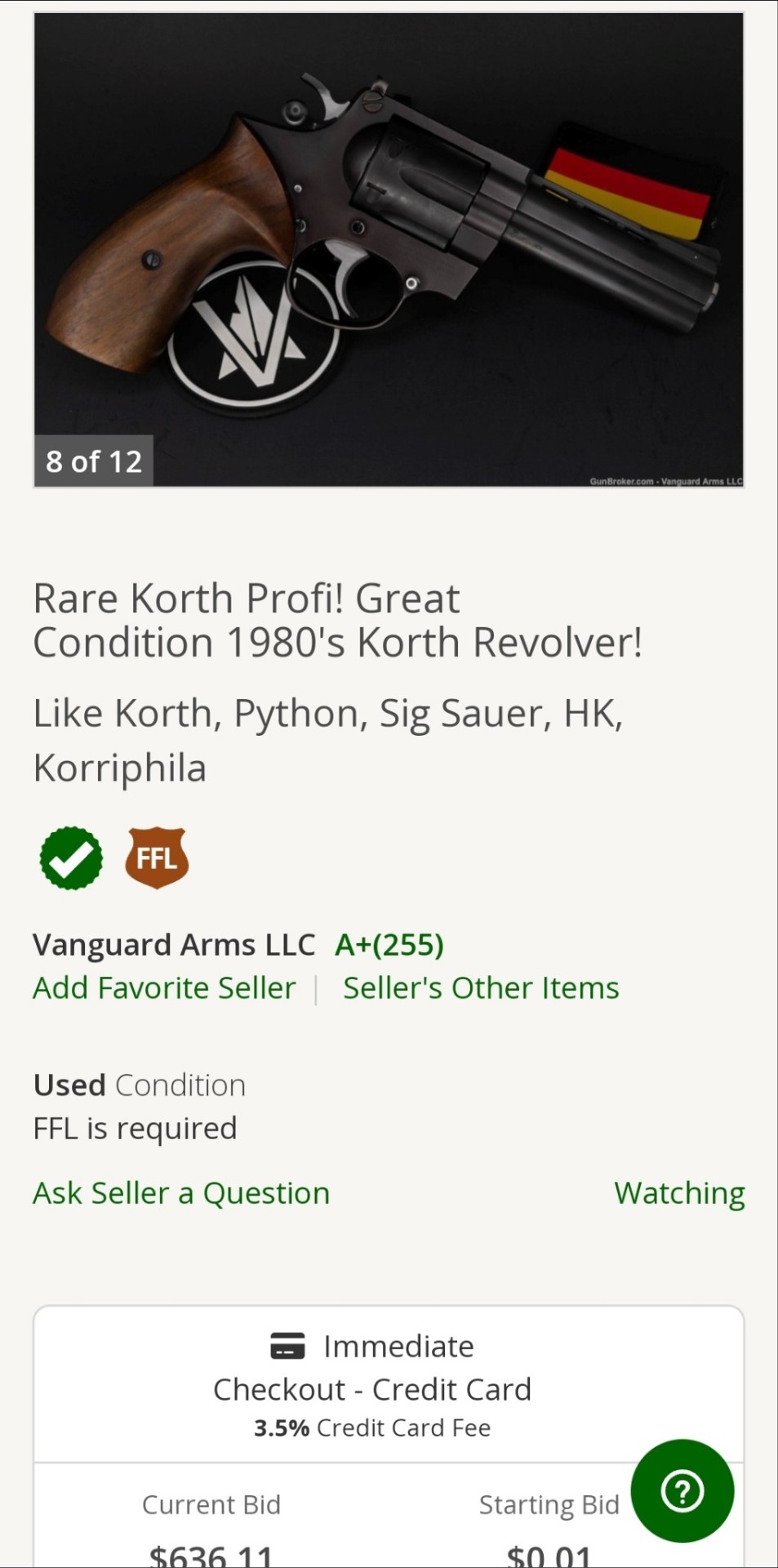

If only I was richer.
8 notes
·
View notes
Text

Oblique view of Merchandise Mart. Fred G Korth 1949
3 notes
·
View notes

